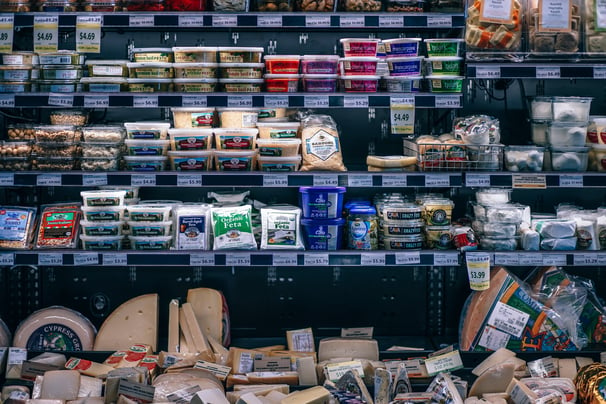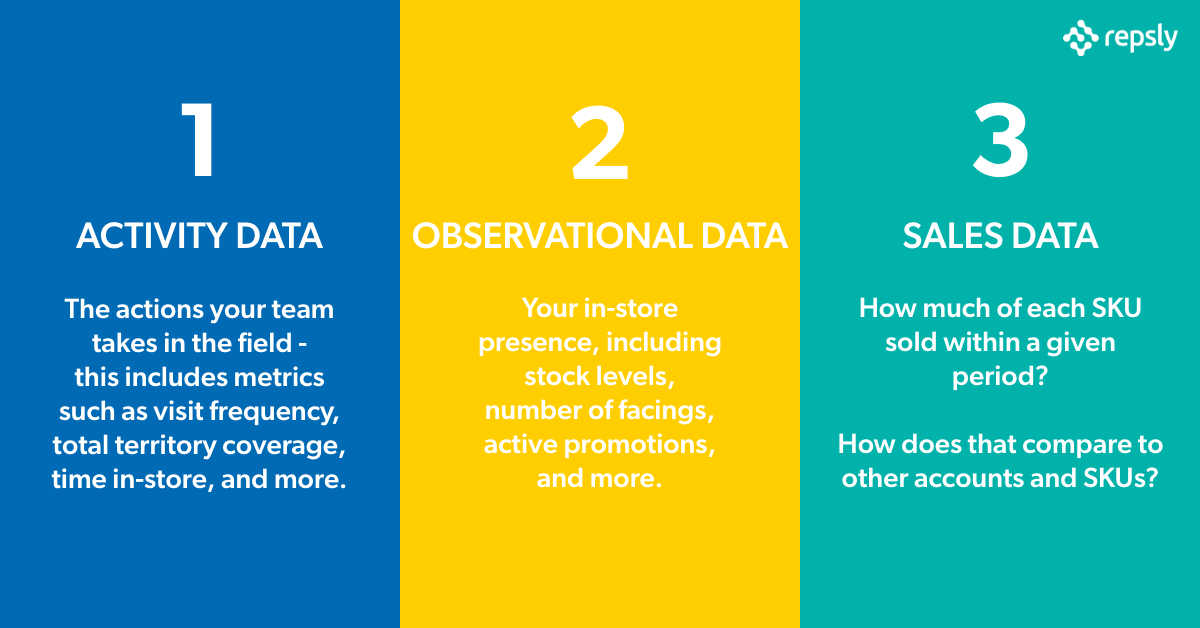Mastering the retail channel is a massive opportunity for CPG brands, but those who have played in the space before know it takes a committed investment to reap the benefits. To make the most of that investment, CPG sales and marketing teams are putting data at the forefront of their retail execution efforts, unlocking the insight they need to master merchandising at the shelf by prioritizing and maximizing high-opportunity initiatives.
Last week, we uncovered how you can take a data-driven approach to expand your in-store footprint. This week, we'll be discussing how your brand can master merchandising at the shelf by leveraging the same three key types of data: activity, observational, and sales data.
Activity Data:
Brands should be regularly tracking the actions the team takes in the field, including metrics such as visit frequency, total territory coverage, time in-store, and more. This type of data is referred to as activity data. With these insights on hand each day, managers at top brands have a better understanding of what their reps are doing in the field and can quickly iterate on plans to help their teams become hyper-efficient.
Here are a few ways these brand keep their shelf-presence near-perfect every day:
- Tracking how long each rep spends in-store on a single visit and comparing that information to the quality of merchandising in the same stores is helping managers give their reps better feedback about where they need to spend more time.
- Keeping track of what route reps take between stores and optimizing that route over time to eliminate territory coverage problems and ensure that every store is properly merchandised.
- Knowing how consistently each rep on their team is collecting the right kinds of data (such as competitor data, shelf condition, etc.) from each account allows managers to address gaps in information and create high-priority stores where more info is needed.
Observational Data:
Contextual information can be the difference between properly evaluating your shelf-presence and scrapping a perfectly good setup. We measure that in-store presence, including stock levels, the number of facings, active promotions, and more through observational data.
Data-driven brands understand this, and are taking these steps to ensure they see the full picture:
- Having their team take photos of the product on the shelf and on display every time they visit an account helps managers give feedback quickly and improve shelf presence.
- Instructing reps to collect information on where competitors are relative to their brand on the shelf. This can help educate where additional promotional materials should be run.
- Recording shelf position from store-to-store and comparing with sales data helps brands know where their product sells best, and what shelf space they need to fight for.
- Taking note of store condition - everything from the shelf their product sites on to the floor in front of the shelf - helps managers better understand which stores need extra care and which stores are in good shape.
Sales Data:
Proper category management and a good understanding of which SKU’s perform well together have helped many emerging brands catapult to success. By measuring sales data, brands have the ability to track key metrics including how much of each SKU sold within a given period, and how their product compares to other accounts and SKUs.
Here are a few things these brands are looking for in their sales data:
- Evaluating sales data for products where cross-merchandising is present is helping brands better choose where to sell complementary SKUs.
- Understanding where they’ve cannibalized their own sales: if sales drop for an existing SKU after introducing a new product nearby, reps should know and managers should be ready to take action.
- Complying to end-of-life guidelines: if sales of a SKU continue after that product should be retired from the shelf, reps can quickly identify and address this while visiting their account, removing that product from the shelf and replacing it with whatever new SKU the brand now intends to sell.
Together, these three types of data give CPG sales and marketing organizations a complete picture of how their products are presented, sold, and supported in all of their accounts, shining a light on how and when brands can deploy their field teams to have the biggest impact in the store.
Many of the fastest-growing consumer brands in the world are leveraging the insights they gain from activity, observational, and sale data to gain huge competitive advantages over other brands in their space.
Explore the 3 Types of Data to Explode Sales to learn four more ways high-performing retail brands are leveraging structured and reliable data to have the biggest impact in the store.





